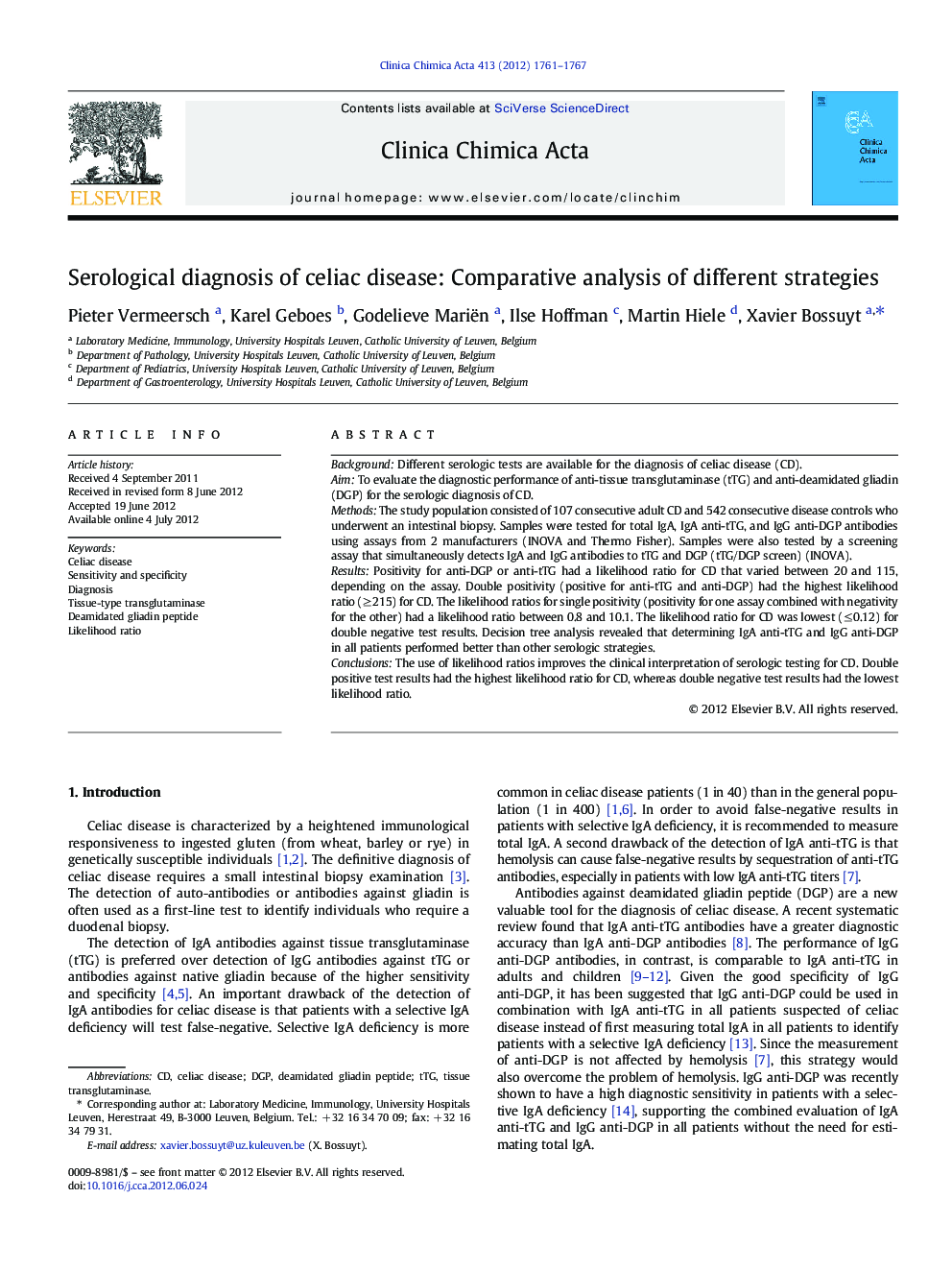| کد مقاله | کد نشریه | سال انتشار | مقاله انگلیسی | نسخه تمام متن |
|---|---|---|---|---|
| 1965557 | 1538686 | 2012 | 7 صفحه PDF | دانلود رایگان |

BackgroundDifferent serologic tests are available for the diagnosis of celiac disease (CD).AimTo evaluate the diagnostic performance of anti-tissue transglutaminase (tTG) and anti-deamidated gliadin (DGP) for the serologic diagnosis of CD.MethodsThe study population consisted of 107 consecutive adult CD and 542 consecutive disease controls who underwent an intestinal biopsy. Samples were tested for total IgA, IgA anti-tTG, and IgG anti-DGP antibodies using assays from 2 manufacturers (INOVA and Thermo Fisher). Samples were also tested by a screening assay that simultaneously detects IgA and IgG antibodies to tTG and DGP (tTG/DGP screen) (INOVA).ResultsPositivity for anti-DGP or anti-tTG had a likelihood ratio for CD that varied between 20 and 115, depending on the assay. Double positivity (positive for anti-tTG and anti-DGP) had the highest likelihood ratio (≥ 215) for CD. The likelihood ratios for single positivity (positivity for one assay combined with negativity for the other) had a likelihood ratio between 0.8 and 10.1. The likelihood ratio for CD was lowest (≤ 0.12) for double negative test results. Decision tree analysis revealed that determining IgA anti-tTG and IgG anti-DGP in all patients performed better than other serologic strategies.ConclusionsThe use of likelihood ratios improves the clinical interpretation of serologic testing for CD. Double positive test results had the highest likelihood ratio for CD, whereas double negative test results had the lowest likelihood ratio.
► Likelihood ratios (LRs) help with the interpretation of serologic testing for celiac disease.
► Double positive test results (IgA anti-tTG and IgG anti-DGP) had the highest LR for celiac disease.
► Double negative test results (IgA anti-tTG and IgG anti-DGP) had the lowest LR for celiac disease.
Journal: Clinica Chimica Acta - Volume 413, Issues 21–22, 12 November 2012, Pages 1761–1767